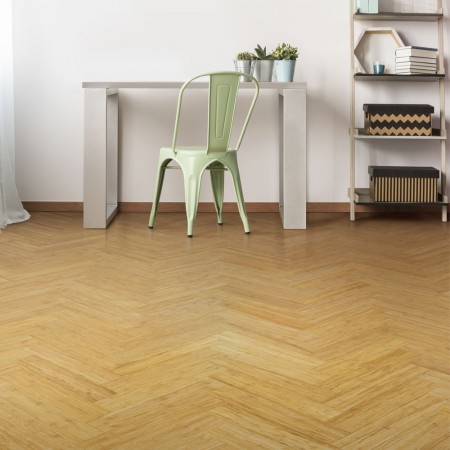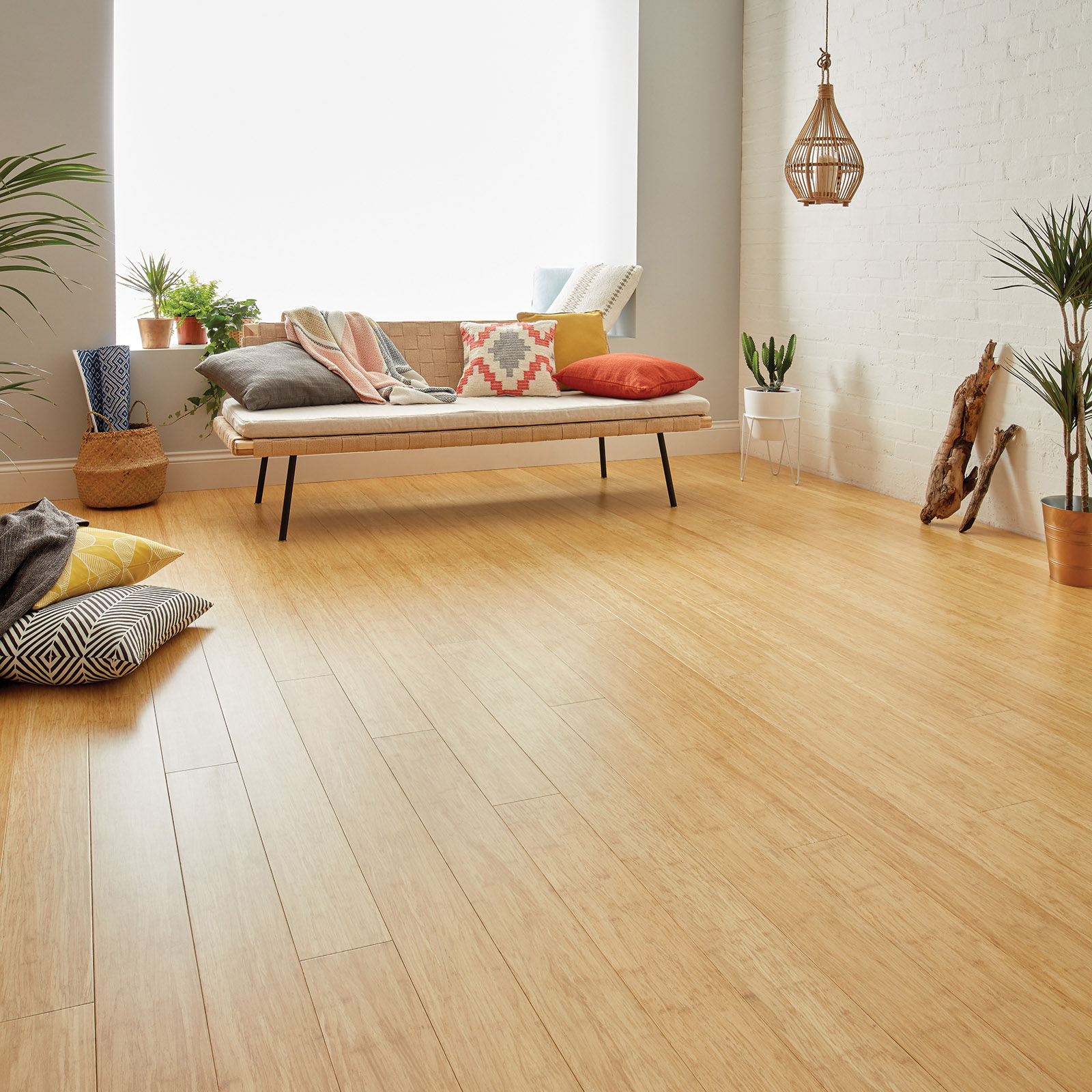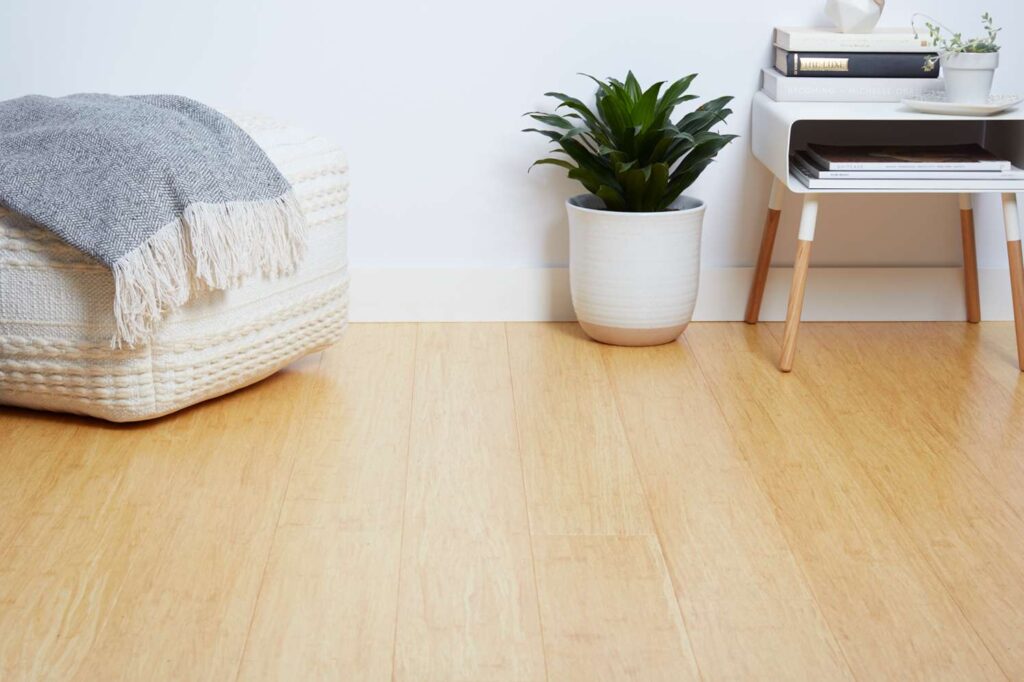Have you ever considered using bamboo flooring in your home? Bamboo is a sustainable and eco-friendly option that has been gaining popularity in recent years. Not only does it offer a unique and stylish look, but it also has several advantages that make it a great choice for your floors. In this article, we will explore the benefits of bamboo flooring in detail and help you understand why it might be the right choice for your home.
Bamboo flooring is known for its sustainability. Bamboo is a fast-growing grass that can be harvested in just a few years, unlike hardwood trees that take decades to mature. This means that bamboo is a renewable resource that can be harvested without causing significant damage to the environment. By choosing bamboo flooring, you are making a responsible choice that helps to preserve our forests and reduce the carbon footprint associated with traditional hardwood floors.
In addition to its sustainability, bamboo flooring is also incredibly durable. It is harder than many hardwood options, making it resistant to scratches and dents. This makes it an excellent choice for high-traffic areas of your home, such as the kitchen and living room. Bamboo flooring is also highly resistant to moisture, making it suitable for bathrooms and other areas that may be prone to spills or humidity. With proper care and maintenance, bamboo flooring can last for many years, making it a wise investment for your home.
As you can see, bamboo flooring offers many advantages that make it an excellent choice for your home. Its sustainability, durability, and resistance to moisture make it a versatile and eco-friendly option. Whether you’re looking for flooring for your kitchen, living room, bathroom, or any other room in your home, bamboo flooring is definitely worth considering. In the following article, we will delve into these advantages in even more detail and provide you with all the information you need to make an informed decision.

Introduction to sustainable flooring
When it comes to choosing flooring for your home, there are numerous factors to consider. Not only do you want a flooring option that will look good and complement your interior design, but you also want one that is sustainable and eco-friendly. This is where bamboo flooring comes in. Bamboo has gained popularity as a sustainable flooring option due to its unique properties and environmentally friendly manufacturing process. In this article, we will explore the advantages of bamboo flooring and why it is an excellent choice for different rooms in your home.
Why bamboo is considered a sustainable flooring option
Bamboo is a sustainable flooring option for several reasons. Firstly, bamboo is a fast-growing grass that can reach maturity in just three to five years, significantly faster than traditional hardwood trees. This rapid growth rate allows for more efficient harvesting and reduces the strain on natural resources.
Additionally, bamboo is considered sustainable because it regenerates naturally after it is harvested. Unlike hardwood trees, which can take several decades to regenerate, bamboo will regrow from its roots and can be harvested again. This process ensures a continuous supply of bamboo without depleting the natural environment.
Furthermore, bamboo is a renewable resource as it can be harvested without killing the plant. When bamboo is cut, the root system remains intact, allowing for new shoots to emerge. This sustainable harvesting method helps to preserve the balance of the ecosystem and prevent soil erosion.
Durability and strength of bamboo flooring
In addition to being sustainable, bamboo flooring is known for its durability and strength. Bamboo is one of the hardest natural materials available for flooring. It has a similar hardness rating to hardwoods like oak and maple, making it a durable and long-lasting flooring option.
The high density of bamboo fibers contributes to its strength and resistance to wear and tear. Bamboo flooring is particularly suitable for high foot traffic areas such as hallways, kitchens, and living rooms. It can withstand the impact and pressure of heavy furniture, pets, and daily activities without easily scratching or denting.
Furthermore, bamboo’s natural resistance to moisture makes it less susceptible to warping or swelling compared to other types of wood flooring. This characteristic makes it an excellent choice for areas with high humidity levels, such as bathrooms and basements.
Eco-friendly manufacturing process of bamboo flooring
Another advantage of bamboo flooring is its eco-friendly manufacturing process. Bamboo flooring production involves minimal waste generation compared to other flooring options. During the manufacturing process, bamboo stalks are cut into strips, which are then laminated and pressed together to form solid flooring planks.
The adhesive used in bamboo flooring is typically low in formaldehyde content, minimizing the emission of harmful volatile organic compounds (VOCs) into the air. This low VOC emission makes bamboo flooring a healthier choice for indoor air quality, particularly for individuals with allergies or sensitivities.
Additionally, the production of bamboo flooring requires less energy and water compared to other flooring materials. The energy-efficient manufacturing process helps reduce the carbon footprint and overall environmental impact of the flooring industry.

Renewable and easily regrowable nature of bamboo
As mentioned earlier, the renewable nature of bamboo is one of its key advantages as a sustainable flooring option. Bamboo grows rapidly and reaches maturity within a few years, allowing for frequent harvesting. This sustainable harvesting process does not harm the environment or deplete natural resources.
Furthermore, bamboo’s regrowable nature makes it a highly sustainable choice. After bamboo is harvested, it regrows from its roots and can be harvested again. This regrowth capability ensures a continuous supply of bamboo without the need for replanting or deforestation.
Bamboo forests also contribute to the absorption of carbon dioxide from the atmosphere, helping to mitigate climate change. The rapid growth rate of bamboo allows it to sequester more carbon dioxide compared to slow-growing trees, making it an environmentally beneficial material.
Advantages of bamboo flooring in different rooms
Now that we have delved into the sustainable aspects of bamboo flooring, let’s explore its advantages in different rooms of your home.
Bamboo flooring in the kitchen
The kitchen is a high-traffic area that often experiences spills, stains, and temperature changes. Bamboo flooring is well-suited for the kitchen due to its durability and resistance to moisture. It can handle the demands of a busy kitchen while adding a touch of natural elegance to the space.
Bamboo flooring’s easy-to-clean surface makes it a practical choice for areas prone to spills and messes. Regular sweeping and occasional mopping are typically sufficient to keep bamboo floors looking clean and well-maintained. It is important to wipe up spills promptly to prevent any potential damage to the flooring.
Furthermore, bamboo’s natural resistance to moisture makes it less susceptible to warping or expanding when exposed to high humidity levels or temperature fluctuations. This characteristic is especially beneficial in kitchens where water spills and cooking activities are common.
Bamboo flooring in the living room
The living room is where you entertain guests and spend quality time with family. It is essential to choose flooring that is not only aesthetically pleasing but also can withstand daily use. Bamboo flooring’s durability and strength make it an excellent option for living rooms.
With its warm and inviting look, bamboo flooring can add a touch of natural beauty to your living space. Its elegance and versatility allow it to complement various interior styles, from modern to traditional. Whether you prefer a light or dark bamboo color, you can find a wide range of options to suit your taste.
Additionally, bamboo flooring’s resistance to scratches and dents makes it a suitable choice for areas with furniture or high foot traffic. It can withstand the impact of heavy objects without easily showing signs of wear and tear, ensuring a long-lasting and attractive floor for your living room.
Bamboo flooring in the basement
The basement is often a challenging space to select flooring for due to potential issues with moisture and cold temperatures. Bamboo flooring is a viable solution for basements as it can handle these conditions effectively.
Basements are prone to moisture intrusion, especially if they are below ground level. Bamboo flooring’s natural resistance to moisture helps prevent any warping, cupping, or mold growth that can occur with other flooring materials. Installing a moisture barrier or using engineered bamboo flooring with built-in moisture resistance can further enhance its suitability for basements.
Additionally, basements tend to have cooler temperatures than the rest of the house. Bamboo flooring provides excellent thermal conductivity, helping to keep the basement warmer and more comfortable. Adding area rugs or underfloor heating can further enhance the warmth and coziness of the space.
Bamboo flooring on the balcony
If you have a balcony or outdoor deck, you may be wondering what flooring option is best suited for this area. Bamboo flooring can be a fantastic choice for balconies due to its durability and resistance to the elements.
Outdoor tiles, such as porcelain, slate, or granite, are popular choices for balcony flooring. These options offer excellent durability and come in a wide variety of styles. However, if you prefer a warmer and more inviting look, bamboo decking is an appealing alternative. It provides a natural and elegant appearance while withstanding outdoor conditions.
It is important to note that when using bamboo flooring on the balcony, it is essential to ensure the flooring is adequately sealed and protected against moisture and the sun’s UV rays. Regular maintenance and sealing will help prolong the lifespan and beauty of the bamboo flooring.
Bamboo flooring in the bedroom
When it comes to bedroom flooring, comfort underfoot is often a top priority. Bamboo flooring may not be the first choice for bedrooms due to its harder surface compared to carpet or carpet-like flooring. However, if allergies or sensitivity to dust is a concern, bamboo flooring can offer a more hypoallergenic option.
Bamboo flooring, when combined with area rugs, can provide both comfort and style in the bedroom. Area rugs can add a soft and plush feel underfoot, making your bedroom cozy and inviting. They also help reduce noise and create a quieter environment, promoting better sleep quality.
If you prefer the look of wood in the bedroom, bamboo flooring’s natural charm and warmth can create an attractive and serene atmosphere. It is worth considering bamboo flooring when looking for a durable and sustainable option for your bedroom.
Bamboo flooring in the bathroom
The bathroom is a high-moisture environment that requires flooring with excellent water resistance. Bamboo flooring is well-suited for bathrooms due to its natural resistance to moisture and versatility in design.
Ceramic and porcelain tiles are commonly used in bathrooms due to their water resistance and ease of cleaning. However, if you desire a different look and feel, bamboo flooring can be an alternative choice that brings an element of natural beauty to the space.
It is important to select bamboo flooring specifically designed for bathrooms, as it often has additional moisture resistance treatment. This ensures that the flooring can withstand regular exposure to water without warping or becoming damaged. Regular maintenance and cleaning are necessary to keep bamboo flooring in the bathroom looking its best.
Maintenance and care for bamboo flooring
Proper maintenance and care are essential to ensure the longevity and beauty of bamboo flooring. By following a few simple steps, you can keep your bamboo floors looking pristine for years to come.
Regular sweeping or vacuuming with a soft bristle attachment helps remove dirt and debris that can scratch the surface of the flooring. Wiping up spills promptly is also important to prevent any potential damage.
When mopping bamboo flooring, it is crucial to use a damp mop rather than a wet one. Excessive moisture can cause the bamboo to expand and potentially warp. Using a pH-neutral cleaner specifically designed for bamboo flooring is recommended to avoid any damage to the finish.
Additionally, it is advisable to use furniture pads or felt protectors under the legs of furniture to prevent scratching or denting. This simple preventive measure can go a long way in maintaining the appearance of your bamboo flooring.

Conclusion
In conclusion, bamboo flooring offers numerous advantages as a sustainable and eco-friendly choice for your home. Its fast growth rate, renewable nature, and eco-friendly manufacturing process make it an environmentally responsible option. Bamboo flooring’s durability, strength, and resistance to moisture make it suitable for various rooms, including kitchens, living rooms, basements, balconies, bedrooms, and bathrooms.
By choosing bamboo flooring, you can enjoy the beauty and warmth of natural wood while contributing to a greener and more sustainable future. From its regrowable properties to its low VOC emissions, bamboo flooring is an excellent choice for both aesthetic and environmental reasons. So why not consider bamboo flooring for your next flooring project and enjoy the numerous advantages it has to offer?